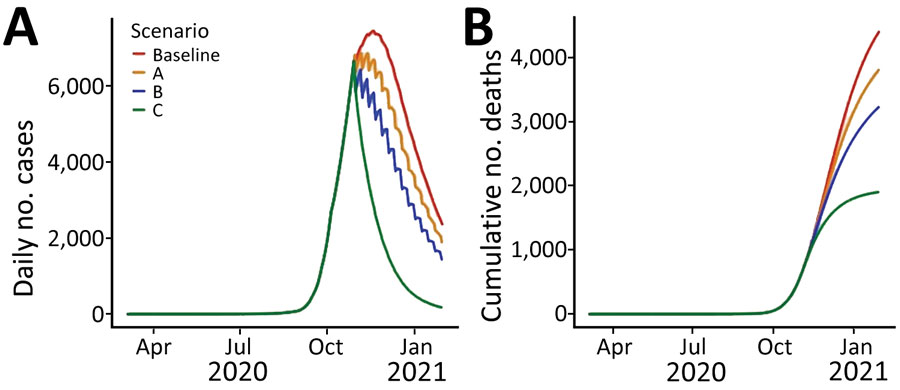Volume 29, Number 9—September 2023
Synopsis
Participatory Mathematical Modeling Approach for Policymaking during the First Year of the COVID-19 Crisis, Jordan
Figure 2

Figure 2. Model-predicted reported number of COVID-19 cases and cumulative number of associated deaths under scenarios A, B, C, and the baseline scenario in a COVID-19 modeling study, Jordan, March 2020–January 2021. Scenario A assumes the entire population, excepting essential services, will physically distance themselves for 24 hours every Friday while reverting to their usual behavior on the other days of the week. Scenario B assumes the population will physically distance themselves for the entire weekend (Friday and Saturday) while reverting to their usual behavior throughout the week. Scenario C assumes the entire population, except for essential services, will physically distance themselves for the entire week while never reverting to their usual behavior. Baseline scenario assumes no government intervention and half the population instinctively physically distancing themselves to avoid infection. Common to each scenario are 2 parameters used to define the extent of the physical distancing intervention: coverage, which refers to the percentage of the population following physical distancing regulations, and adherence, which refers to the extent to which individual persons follow those guidelines. On days when the interventions are not enforced, simulations assume 80% adherence and 50% coverage of the population practice physical distancing, while on days when the interventions are enforced it is assumed that 80% adherence and 90% coverage of the population physically distance themselves.
1These first authors contributed equally to this article.